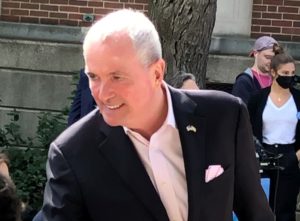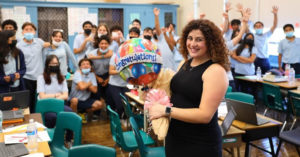There’s another one of those heart-breaking articles about impoverished school children getting shafted by state budget cuts. This one’s (in The Record) about the NJ After 3 program, which provides after-school programming to poor kids—like little Jamere Carter in the article, a Camden third grader — but lost all its funding during our recent, ongoing fiscal crisis. According to the NJ After 3’s website, this state funding was about $5.2 million and enabled schools to essentially extend the school day, in some cases by up to 40%.
There’s no doubt that after-school programming is essential for poor children whom otherwise can end up in sub-par child care or out on the streets. (Says NJ After 3, “Across the globe, public schools have been structured to provide students with more time, more relevance, more hands on experience, and more physical activity so that they can lead healthy lives and compete in the global economy. Conversely, the amount of learning time that children receive in the United States has remained virtually unchanged since we were a nation of farmers.”) But we seem to be stuck with the current paradigm in NJ (in the US in general too) where the average school year runs 180 days and 6 hours and 30 minutes. In NJ in particular we pay an annual cost per pupil of $15,168 and about $18,378 in our high-needs districts. This raises a question: Is there a cost-efficient way to extend the school year and day for kids who need it?
Actually, some public charter schools do extend the school day and school year, though a fair number stick to NJ’s average of 180 days per year for 6 hours and 30 minutes. For example, according to NJ DOE data, Freedom Academy Charter School in Camden runs 217 days for 9 hours and 55 minutes. Cost per pupil is $13,522. (Maybe Jamere can go there for 5th grade if he makes it through the lottery.) The Golden Door in Jersey City (of Bret Schundler fame) runs for 187 days eight hours per day. (Cost per pupil: $11,721.) The four KIPP schools in Newark extend the school day and the school year. For example, Leap Academy runs 8 hours per day for 200 days at a cost per pupil of $12,302. Team Academy, another KIPP (with 1,800 kids on the waiting list) goes for 210 days, 9 hours and 30 minutes per day, at a per pupil cost of $15,961. North Star Academy has 196 days for 8 hours per day at $13,524 per kids. Robert Treat Academy’s calendar is 201 days for 7 hours per day at a cost per pupil of 12,879.
You get the idea. We already have a model for kids who need a longer school day. It’s called a public charter school, unconstrained by obsolete labor contracts that mandate agrarian calendars and 7 hour work days for educators (including lunch and prep time). Can this solution supplant the NJ After 3 program? Probably not, but it’s another argument for expanding charters in our poor urban neighborhoods, and another reason why the current antagonism between NJEA and the DOE is not just about salary freezes and Race To The Top applications.




